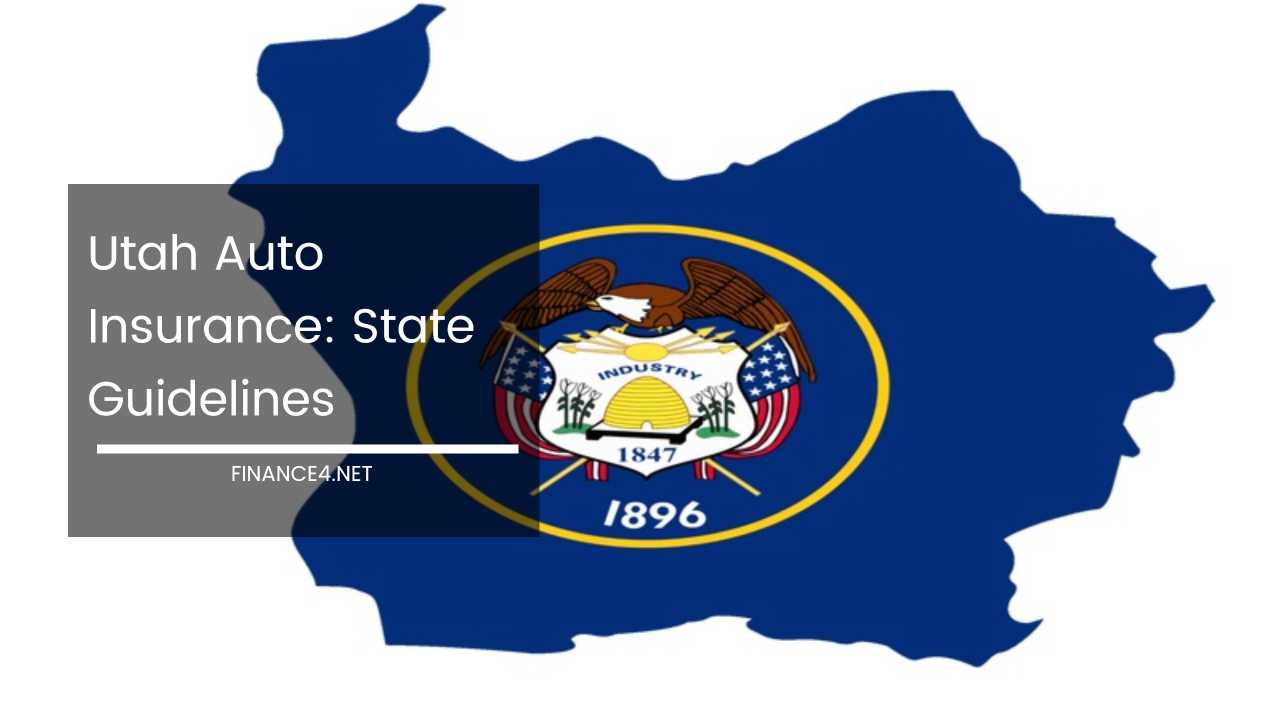Utah Auto Insurance: State Guidelines

Utah Auto Insurance: Navigate the Road with Confidence
Cruising through Utah’s awe-inspiring landscapes, from the snow-capped peaks of the Wasatch Range to the fiery canyons of Zion National Park, is an unforgettable experience.
But before you embark on your Utah adventure, understanding the state’s auto insurance guidelines is crucial for a smooth and protected journey.
This comprehensive guide will equip you with the knowledge to navigate Utah’s mandatory coverages, explore valuable optional protections, and discover strategies to keep your insurance costs manageable.
Demystifying Utah’s No-Fault System
Utah operates under a no-fault system. This means that in most accidents, regardless of who caused it, your own insurance policy will primarily cover your medical expenses and certain other losses.
This simplifies the initial claims process, particularly when dealing with minor accidents. However, it’s essential to grasp the limitations of a no-fault system:
- Limited Coverage for Major Accidents: While the no-fault system streamlines initial medical claims, it can restrict compensation for severe injuries. If the accident results in significant medical bills exceeding your PIP coverage or long-term disabilities, pursuing compensation from the at-fault driver’s insurance might be necessary. This process can be more complex and require legal assistance.
- Ineligible for Pain and Suffering: Under Utah’s no-fault system, you can only seek compensation for pain and suffering from the at-fault driver’s insurance if your medical expenses exceed a specific threshold, which can be quite high.
Understanding these limitations emphasizes the importance of considering additional insurance options beyond the mandatory minimums.
Beyond the Minimum: Essential Insurance Coverages in Utah
While Utah mandates basic liability insurance and PIP coverage, venturing beyond the minimums is highly recommended for comprehensive protection on the road. Here’s a breakdown of essential coverages:
- Liability Insurance: This acts as your financial safety net in case you cause an accident. It covers:
- Bodily Injury Liability: Pays for medical expenses of those injured in the accident you caused, up to the policy limits. As mentioned earlier, Utah’s minimum limits are $25,000 per person and $65,000 per accident. However, these might not be sufficient for severe injuries. Consider increasing your limits to $100,000 per person and $300,000 per accident for better protection.
- Property Damage Liability: Covers repairs to another person’s vehicle or property damaged in the accident you caused, with a minimum limit of $15,000 in Utah. Similar to bodily injury liability, consider increasing this limit to safeguard your assets.
Remember: These minimums are the legal requirement to drive in Utah. However, inadequate coverage can leave you financially responsible for damages exceeding your limits.
- Personal Injury Protection (PIP): This mandatory coverage acts as your personal medical insurance after an accident, regardless of fault. It covers medical expenses for you and your passengers, including:
- Hospital bills: Covers the costs associated with hospitalization after an accident.
- Doctor visits: Covers the cost of doctor visits and other medical treatments needed due to the accident.
- Lost wages: Can help compensate for lost income due to injuries sustained in the accident.
- Rehabilitation costs: May cover physical therapy or other rehabilitation services required for recovery.
Utah mandates a minimum PIP coverage of $3,000. While this can help with initial medical expenses, consider increasing your PIP limits, especially if you have a high-deductible health insurance plan or rely on your car for work.
Safeguarding Yourself: Valuable Optional Coverages
While not mandatory, these additional insurance options offer significant protection in various situations:
-
Uninsured/Underinsured Motorist Coverage (UM/UIM):
- Uninsured Motorist (UM) Coverage: Protects you financially if you’re in an accident with a driver who has no liability insurance. UM coverage pays for your medical bills, lost wages, and pain and suffering, up to your policy limits.
- Underinsured Motorist (UIM) Coverage: Protects you if the at-fault driver’s insurance isn’t enough to cover all your accident-related expenses. UIM coverage kicks in after the at-fault driver’s insurance reaches its limits.
In Utah, where the number of uninsured drivers is above the national average, UM/UIM coverage is highly recommended. It provides crucial financial protection in situations where the at-fault driver lacks adequate insurance.
- Collision Coverage: This coverage pays to repair your car if it’s damaged in a collision with another vehicle or object, regardless of fault. This can be a lifesaver in situations where you’re responsible for the accident or when the at-fault driver lacks collision coverage or cannot be identified.
-
Comprehensive Coverage: This coverage goes beyond collisions and protects your car from damage caused by events other than collisions, such as:
- Theft: Covers the cost of replacing your car if it’s stolen.
- Vandalism: Covers repairs to your car if it’s vandalized.
- Fire: Covers damage to your car caused by fire.
- Weather events: Covers damage to your car caused by hail, floods, or other weather events.
Comprehensive coverage also typically comes with a deductible. Consider the value of your car and your risk tolerance when choosing your deductible amount.
Understanding What Affects Your Utah Auto Insurance Rates
Several factors influence your Utah auto insurance premium. Here’s a breakdown of the key ones:
- Age and Driving Experience: Statistically, younger drivers with less experience are more likely to be involved in accidents, leading to higher insurance rates. As you gain experience and age, your rates typically decrease.
- Driving Record: Accidents, traffic violations, and especially DUIs will significantly increase your insurance premium. Maintaining a clean driving record is the single most effective way to keep your rates low.
- Location: Where you live in Utah can impact your rates. Urban areas generally have higher rates due to increased traffic congestion and higher accident risks.
- Type of Vehicle: The year, make, model, and safety features of your car all play a role in determining your premium. Generally, newer, more expensive vehicles with advanced safety features will have lower rates compared to older, less expensive models with fewer safety features.
- Your Credit Score: In Utah, your credit score can be a factor in determining your insurance rates. Drivers with good credit scores are typically seen as lower risks and may qualify for lower premiums.
Understanding these factors allows you to make informed decisions that can potentially lower your insurance costs.
Smart Strategies for Saving Money on Utah Auto Insurance
Here are some effective tactics to keep your Utah auto insurance costs under control:
-
Shop Around and Compare Quotes: Don’t settle for the first offer you receive. Get quotes from multiple insurance companies, including national carriers and regional providers. Utilize online quote comparison tools or contact independent insurance agents to get a wider range of quotes.
-
Maintain a Good Driving Record: As mentioned earlier, avoiding accidents and traffic violations is the most impactful way to lower your rates. Practice safe driving habits and take defensive driving courses to improve your skills and potentially qualify for discounts.
-
Increase Your Deductible: A higher deductible lowers your premium. However, you’ll be responsible for a larger amount out of pocket if you need to file a claim. Carefully consider your budget and risk tolerance when choosing a deductible amount. Strike a balance between affordability and financial protection.
-
Take Advantage of Discounts: Many insurance companies offer various discounts. Look for discounts for things like:
- Good student performance (typically for young drivers)
- Taking defensive driving courses
- Maintaining multiple policies with the same company (bundling auto and homeowners/renters insurance)
- Low annual mileage (if you drive less)
- Owning a car with advanced safety features
- Military service affiliation (for veterans and active-duty personnel)
-
Review Your Coverage Regularly: As your life and driving habits change, your insurance needs might evolve as well. Regularly review your coverage, typically annually, to ensure it aligns with your current situation. You might be able to remove unnecessary coverages or adjust limits as your car depreciates.
Filing a Claim in Utah
If you’re unfortunate enough to be involved in an accident in Utah, here’s a general guide on filing a claim:
- Ensure Everyone’s Safety: The first priority after an accident is to ensure everyone involved is safe. If there are injuries, call 911 immediately.
- Gather Information: Exchange contact information with all parties involved, including drivers, passengers, and any witnesses. Note down license plate numbers, insurance company details (if available), and a brief description of the accident scene.
- Report the Accident: If the accident involves injuries, property damage exceeding a certain amount (which varies depending on your insurance company), or a hit-and-run situation, you’re required to report it to the police. File a police report and obtain a copy for your insurance records.
- Contact Your Insurance Company: As soon as possible after the accident, notify your insurance company. Be prepared to provide details about the accident, including the date, time, location, and the parties involved. Your insurance company will guide you through their specific claims process.
- Document Everything: Take photos of the accident scene, the damage to your vehicle, and any visible injuries. Keep all receipts related to the accident, including towing, repairs, and medical bills.
Remember: Each insurance company has its own claims process. Refer to your policy documents or contact your insurance provider for specific instructions.
Important Considerations When Choosing an Insurance Company
Here are some key factors to consider when selecting an auto insurance company in Utah:
- Financial Strength and Reputation: Research the company’s financial stability and claims processing reputation. Look for companies with a strong track record of paying claims fairly and efficiently.
- Coverage Options and Limits: Compare the different coverage options and limits offered by various insurance companies. Ensure the company provides the types of coverage you need with adequate limits to meet your financial protection needs.
- Customer Service: Consider the company’s customer service reputation. Look for a company with a positive record of providing prompt and helpful assistance to policyholders.
- Price: While cost is certainly a factor, don’t solely base your decision on the cheapest premium. Consider the value proposition – are you getting adequate coverage and good customer service for the price?
It’s recommended to obtain quotes from several insurance companies before making a final decision.
Additional Resources for Utah Drivers
For further information and resources related to Utah auto insurance, consider visiting the following websites:
-
Utah Department of Motor Vehicles (DMV): https://dmv.utah.gov/ This website provides information on Utah’s driver licensing requirements, vehicle registration, and traffic laws.
-
Utah Insurance Department: https://insurance.utah.gov/ This website offers resources on various insurance topics, including auto insurance. You can find information on consumer rights, complaint filing procedures, and a directory of licensed insurance companies in Utah.
-
Insurance Information Institute (III): https://www.iii.org/index.html This national non-profit organization provides unbiased information and resources on various insurance topics, including auto insurance.
Final Thoughts: Drive Safe and Secure in Utah
By understanding Utah’s auto insurance requirements, exploring optional coverages, and implementing strategies to manage costs, you can ensure you have the necessary protection on Utah’s scenic roads.
Remember, prioritizing safe driving habits is the most effective way to avoid accidents and keep your insurance rates low.
With the right insurance plan and a focus on safety, you can navigate Utah’s breathtaking landscapes with confidence and peace of mind.
Disclaimer: This information is intended to be general in nature and does not constitute legal advice. Always consult with a qualified insurance professional to discuss your specific needs and circumstances.
Image Credit: WikiMedia



